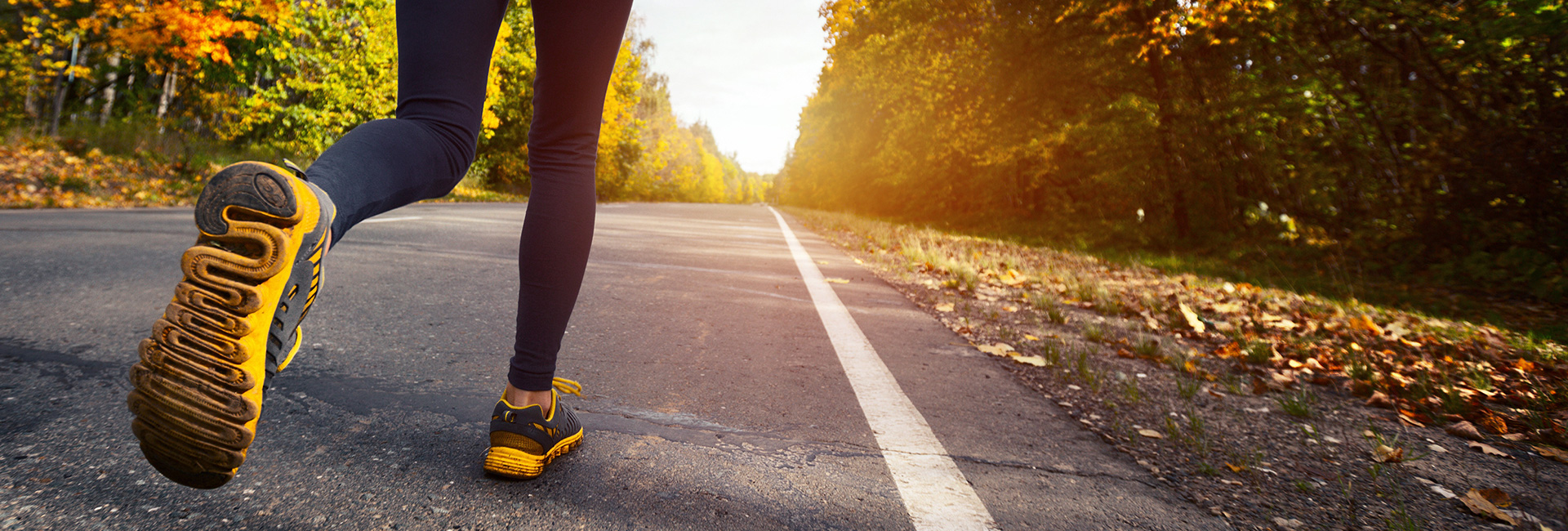Running could just be the perfect exercise. Running doesn’t require a membership, you don’t need a personal trainer, it gets you outside, and the only equipment you need is a pair of running shoes. Research shows that runners get sick less, have reduced depression and cancer rates, have decreased cholesterol and incidence of Diabetes, and have greater longevity. In addition, running may not be as stressful to the joints as once thought. A Stanford researcher found that there was no difference in osteoarthritis in the knees between runners and non-runners.
In fact, a study out of the British Journal of Sports Medicine showed that the onset of disability (difficulty walking, standing, performing daily activities) in people over age 60 was 16 years later in runners versus non-runners. Recently, the concept that humans have “evolved” to run long distances has received a lot of media attention. An evolutionary biologist out of Harvard has proposed that early humans evolved to run long distances to outlast their hunted prey in a technique called “persistence hunting.” Current evidence suggests that perhaps humans are built more for running than for sitting at a desk and that running is not “bad for the knees,” can prolong your life, and can improve your quality of life as you age.
Start slow!
If you have never run before, it is important to take it slow. The human body is an amazing biomechanical machine that responds to physical stress by getting stronger. If stress is applied in the correct dose, the muscles, tendons, ligaments, and joints will adapt and get stronger. However, if the dosage is increased too quickly, there is breakdown in these tissues and injuries occur.
One reason for high injury rates, especially in runners and athletes over 30, is that cardiovascular fitness improves faster than tissue fitness. In other words, your lungs and heart get in shape in less time than it takes your body’s tendons, joints, and ligaments to tolerate the increased load of running.
Another reason is the high forces of running can produce anywhere from 6–10 times your body weight at impact.

Tips for a successful start.
The tips listed below will help you avoid overstressing your tissues and prevent injuries.
- Run/Walk program: If you are a new runner or are returning to running after taking more than a year off, start with a run/walk program. A good ratio to start with is 1-minute run: 4-minute walk. Add 1 minute to your ratio every two weeks (2-minute run: 3-minute walk) until you have progressed to a ratio that is pain-free and comfortable.
- 10 percent Rule: Do not increase your weekly mileage by more than 10 percent per week. If you add hills and track workouts to your training, you may even want to decrease your mileage that week.
- Stretch after you run: Studies have shown that stretching before a run can actually increase your risk of injury. Take the time to stretch key muscle groups after your run. A link for a copy of running stretches can be found at the end of the article.
- Run with short strides: To reduce the impact of your body weight, attempt to strike your foot under your body (not out in front of you).
- Purchase good shoes: Go to a store that specializes in runners’ shoes.
You can count on having some soreness as you start your running program, but all pain is not bad. Our body responds to physical stress through inflammation. Inflammation is the process that our body uses to heal itself, and this process can make you sore (this is also the process that makes us stronger).
Significant soreness usually lasts 24–48 hours after a workout. Signs and symptoms that indicate you have over-stressed your body include severe, sharp joint or tendon pains, pain that keeps you awake at night, swelling or redness, excessive fatigue, and frequent illness. If you experience these types of symptoms, take a week off from running and then slowly ease back into your normal workout program.
If you need more guidance, join a local running group or a coached training program. Most areas have several running programs and groups that meet one to two times a week for organized runs and coaching. Another way to get motivated is to pick a local event and train for it. Most communities will have races at distances ranging from 5 to 30 kilometers.
Finally, physical therapists are great resources for runners. PTs are experts in biomechanics and injury treatment. Many offer free screenings and running classes.
Running is a lifetime sport if you listen to your body and are smart with your training. Keep on running!
Start your journey to pain-free living today.
Our experts are committed to providing effective, efficient, and compassionate care to help you live a pain-free, active life. Our passion is to help every patient reach their goals on their journey to recovery and optimal performance.


